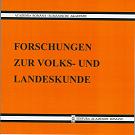ZUM STIL DER LATEINISCHEN GRABINSCHRIFTEN IN DEN KIRCHEN SIEBENBÜRGENS (1300-1850) II. Teil
Some remarks on the style of funerary Latin inscriptions (part II)
Author(s): Filimon Doina DorofteiSubject(s): Language and Literature Studies
Published by: Editura Academiei Române
Keywords: Keywords: Funerary inscriptions; Transylvania; style; media et infima Latinitas; imitation of the Antiquity.
Summary/Abstract: Among other categories of inscriptions, the funerary ones are the most spectacular: evolving from the mere mentioning of the deceased person’s name, age, date of death, they add gradually Biblical quotations and moral comments, then become long eulogies in verse. The structure of a funerary inscription is analysed in its chronological development, from the following points of view: age, sex (funerary inscriptions for children, women, and men); priests/laity; high rank nobility/craftsmen, tradesmen; ethnic background (focusing on Saxons and Magyars) etc. There are many examples illustrating the return to classical models and the imitation of the pagan and Christian Antiquity in the Renaissance period: presence of the deities of ancient mythology (among them Parcae), funerary formulae such as hodie mihi cras tibi, Quod tu es ego fui quod ego sum tu eris, the extended use of the plays upon words, the dialogue between the deceased and the uiatores, but all of them are included in the Christian message which became more and more stressed in epithaphs of the early modern period.
Journal: Forschungen zur Volks- und Landeskunde
- Issue Year: 2013
- Issue No: 56
- Page Range: 73-95
- Page Count: 23
- Language: German
- Content File-PDF

